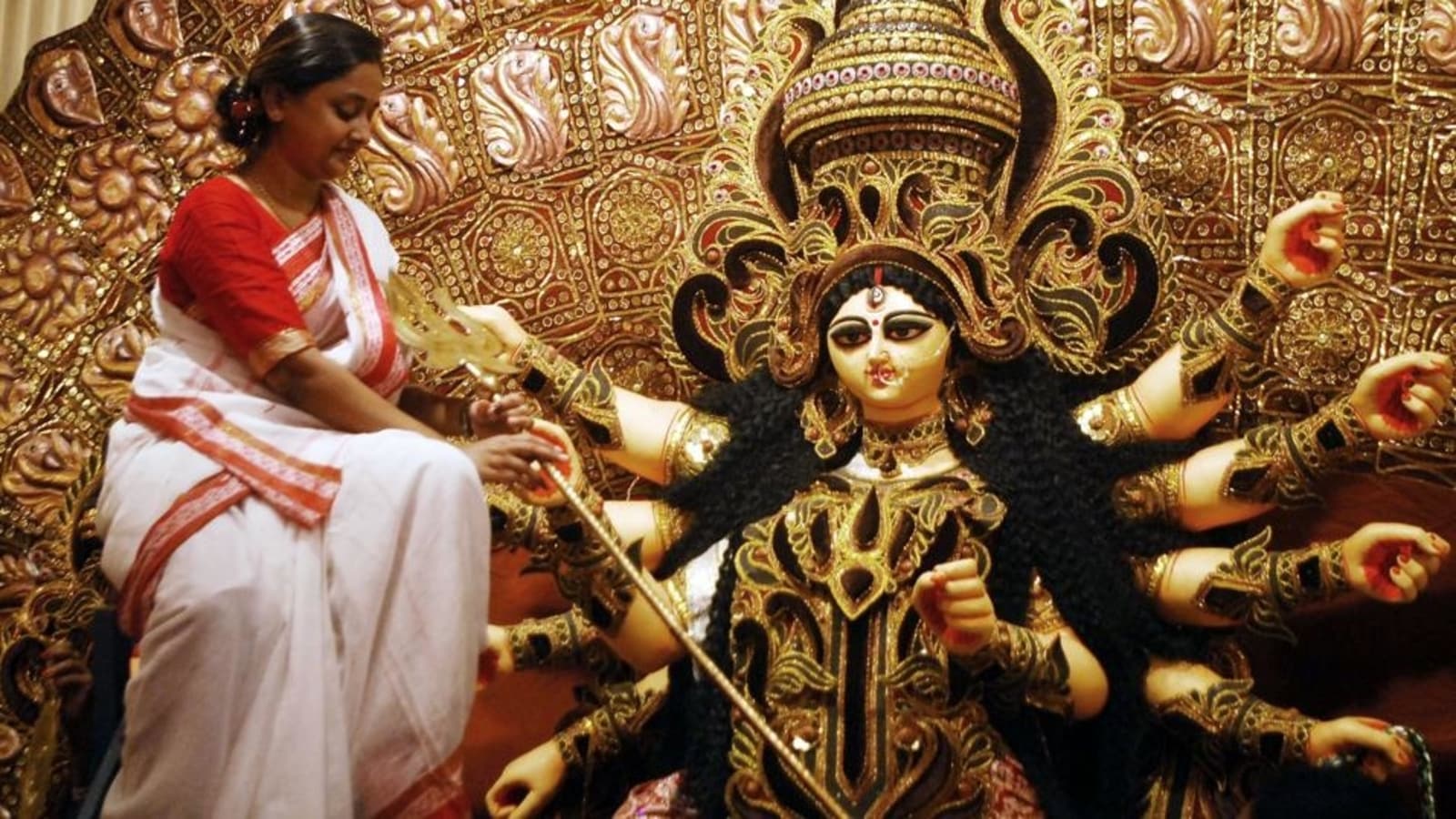According to legend, King Jagat Malla encountered the goddess in the form of Mrinmayee Devi in a forest, where she instructed him to build a temple at a specific spot. Upon digging, a small figurine of the goddess was discovered, which became the core of the first clay idol made from the sacred soil of the Ganga. This miraculous event laid the foundation for a Durga Puja tradition that has continued for over a millennium. The worship of Durga, along with her four children—Lakshmi, Saraswati, Kartik, and Ganesh—was an innovation introduced by the Malla rulers and later spread throughout Bengal.
 Over the centuries, this puja developed distinct rituals that remain untouched by time. It begins earlier than most Durga Pujas, starting on Jita Ashtami, and features unique ceremonies such as bel-baran and the worship of three separate forms of Durga—Boro Thakurani, Mejo Thakurani, and Chhoto Thakurani—each depicted through traditional Pot Chitra paintings. Another striking ritual is the firing of a cannon nine times on Ashtami, a practice that began during the reign of King Dhari Malla in the 16th century. Interestingly, the main idol is never immersed, and the priest performs parts of the rituals with his back turned to the goddess—a rare and symbolic tradition.
Over the centuries, this puja developed distinct rituals that remain untouched by time. It begins earlier than most Durga Pujas, starting on Jita Ashtami, and features unique ceremonies such as bel-baran and the worship of three separate forms of Durga—Boro Thakurani, Mejo Thakurani, and Chhoto Thakurani—each depicted through traditional Pot Chitra paintings. Another striking ritual is the firing of a cannon nine times on Ashtami, a practice that began during the reign of King Dhari Malla in the 16th century. Interestingly, the main idol is never immersed, and the priest performs parts of the rituals with his back turned to the goddess—a rare and symbolic tradition.
The celebrations extend beyond Durga Puja into Dussehra, marked by the Ravan Kaata festival. Dancers dressed as Hanuman, Sugriv, Jambavan, and Vibhishan roam the streets, reenacting parts of the Ramayana. Ritual battles like Kumbhakarna Badh, Indrajit Badh, and Ravan Badh take place over three days, blending the traditions of Durga worship with Ramayana lore—another unique feature of the Bishnupur puja.
 Though the grandeur of the celebrations has lessened due to historical events such as British colonization and the decline of the Malla dynasty, the spirit of Mrinmoyee Maa er Pujo remains strong. Even today, the temple stands rebuilt, the rituals intact, and the local community deeply devoted. As one of the oldest surviving religious festivals in the world, it continues to be a powerful symbol of faith, heritage, and resilience.
Though the grandeur of the celebrations has lessened due to historical events such as British colonization and the decline of the Malla dynasty, the spirit of Mrinmoyee Maa er Pujo remains strong. Even today, the temple stands rebuilt, the rituals intact, and the local community deeply devoted. As one of the oldest surviving religious festivals in the world, it continues to be a powerful symbol of faith, heritage, and resilience.





